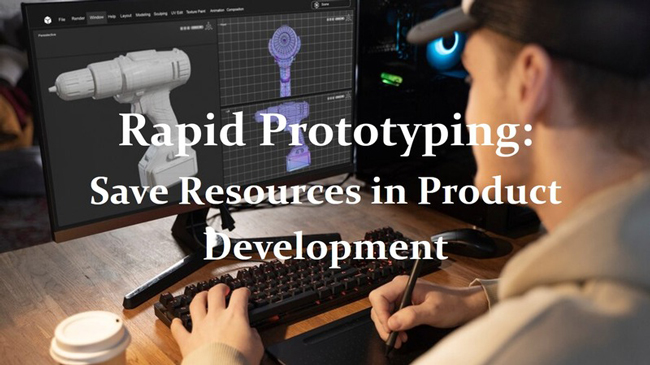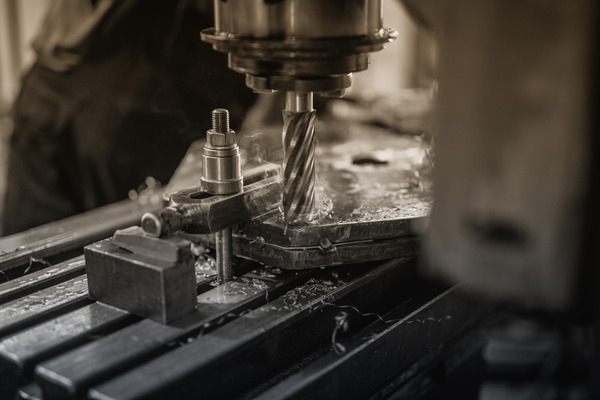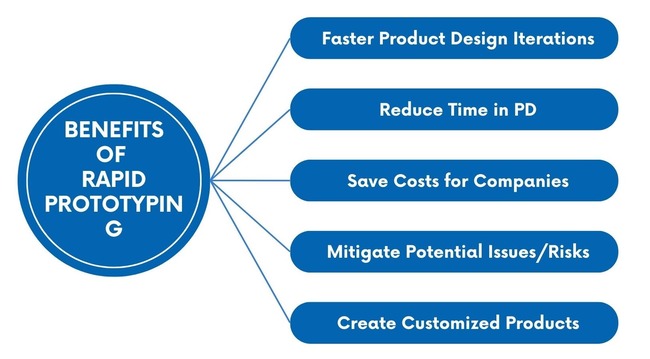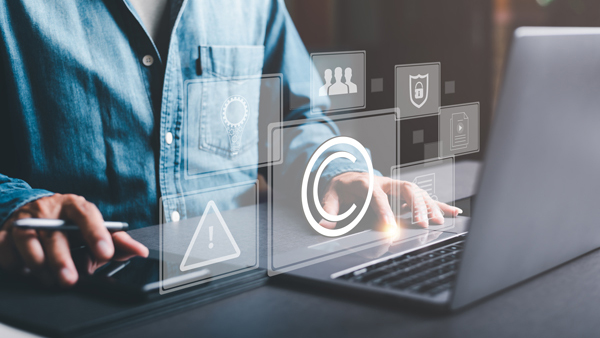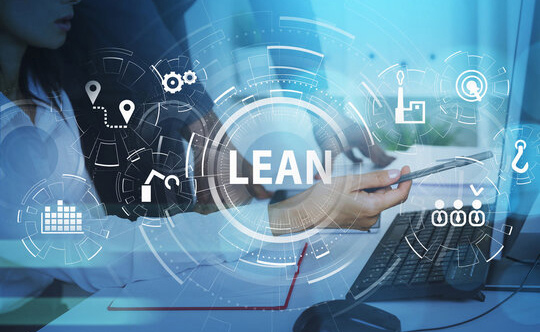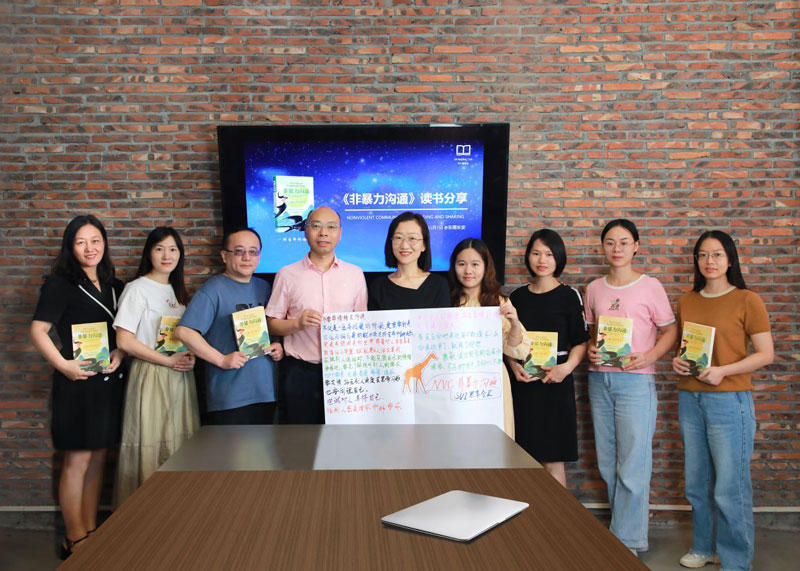Rapid Prototyping: Save Resources in Product Development
- Date:
- Author: SVI Content Team
- Share:
In the high-speed manufacturing environment, gaining market dominance requires companies to streamline the design and production of products, giving them a competitive edge. The journey from concept to finished product encompasses numerous activities, and reducing the time required for each of these steps presents a significant challenge. Rapid prototyping (RP) has emerged as an invaluable method within this context for product development.
This article aims to provide an insightful introduction to rapid prototyping, delving into its definition, methods utilized, benefits, and key processes involved. By the end, readers will have a comprehensive understanding of RP and its potential.
Part 1. What Is Rapid Prototyping?
1. Rapid Prototyping Definitions
How to define rapid prototyping (RP)? Rapid prototyping is the fast transformation of a digital design into a tangible product through RP tooling like 3D printing, CNC, etc. It is primarily handled by designers and engineers in manufacturing. After the basic product requirements are obtained, test prototypes are quickly built, and design solutions are tested and analyzed, evaluated, and so on. Companies with this ability will be game-changers in industries.
A single traditional manufacturing method takes longer lead times, and the longer the lead time, the more the cost of the production process will increase accordingly. Compared to traditional manufacturing methods, rapid prototyping has a performance on increasing speed, shortening product development cycles, and reducing design expenses.
2. What's the Purpose of Rapid Prototyping
The main goal of rapid prototyping is to accelerate the PD cycle by reducing the time and cost associated with traditional prototyping methods. Creating prototypes quickly after product designs and before production can make speedy adjustments by gaining advice from clients, identifying design flaws, and foreseeing underlying risks. It helps improve product quality and decreases time and costs.
3. Common Rapid Prototyping Techniques
In manufacturing, there are several typical techniques for rapid prototyping: 3D printing, Computer Numerical Control (CNC) Machining, and Injection Molding (IM).
3D Printing: 3D printing builds up physical objects layer by layer, directly from digital designs. It allows designers to quickly produce tangible models with complex geometries and test their form, fit, and functionality. 3D printing is widely used in various industries, including product design, engineering, and healthcare. Examples of rapid prototyping 3D printing technologies include Fused Deposition Modeling (FDM), Selective Laser Sintering (SLS), and Stereolithography (SLA).
CNC Machining: Computer numerical controlled machines are subtractive manufacturing techniques that quickly cut or shape materials based on digital designs. They are particularly useful for creating prototypes from sheet materials like wood, plastic, or metal. This RP method offers precision and speed in prototyping parts and components.
Injection Molding: Injection molding is a widely used manufacturing process for producing large quantities of identical plastic parts and is known for its high production efficiency, accuracy, and repeatability. It can be used to create molds for high-fidelity prototypes, allowing for the production of multiple prototype parts with similar properties to the final manufactured product.
SVI Global has its own Product Development team that offers exceptional services to our customers who choose to outsource manufacturing. Our team possesses expertise in building rapid prototypes, creating precise data sets for product development, and swiftly generating models through computer-aided design (CAD) techniques. What’s more, our team has a close collaboration with local factories, which makes a seamless follow-up on prototypes during the process and delivers accurate information and requirements to them to meet the customer’s preferences.
Part 2. What Are the Types of Rapid Prototypes?
Based on the fidelity of the rapid prototype in terms of appearance, size, functionality, material, etc., it can be roughly distinguished into two different types: low-fidelity prototype and high-fidelity prototype.
1. Low-fidelity Prototype
Low-fidelity prototypes are simple and basic representations of product concepts, and they are considered fast and inexpensive to create. They do not require a resemblance to the final product as they are primarily used to convey the concept of the product, and the core functionality rather than sophisticated details, with a focus on presentation and gathering feedback. With low-fidelity prototypes, designers can quickly iterate, refine their ideas and make informed decisions to enhance the design and functionality of the final product.
Simple examples of low-fidelity prototypes are: paper, sketches, cardboard, and other physical models.
2. High-fidelity Prototype
High-fidelity prototypes are similar to final products. Because they are accurate and detailed representations of product concepts, having a greater degree of precision and sophistication in their appearance, functionality and other aspects. High-fidelity prototypes are usually created in the later stages of product development, where the design concept has been refined and validated through testing with low-fidelity prototypes.
Examples of high-fidelity prototypes are: 3D models, injection molding.
Part 3. Advantages of Rapid Prototyping in Product Development
Here are some of the benefits that come with rapid prototyping.
1. Faster Product Design Iterations
One of the benefits of rapid prototyping in the product development stage is that it enables rapid product iterations, expediting the overall process. It can be challenging to gain consistent and accurate demand information in the early stage. By making multiple prototypes can more quickly obtain valuable inspiration and feedback from users, allowing for prompt and continuous adjustments and improvements.
2. Reduce Time in Product Development
The purpose of rapid prototyping is to reduce the time spent in PD. Without the need for traditional time-consuming tooling such as molds and machining, 3D printing technology helps create physical prototypes quickly based on the data design in a few to a dozen hours. Feedback and multiple iterations in a short time significantly reduce the time spent on prototyping, obtaining a shorter lead time, and accelerating the product to the marketplace.
3. Save Costs for Companies
Rapid prototyping offers significant cost savings for companies in various ways. By utilizing rapid prototyping techniques, engineers can identify design errors or functional deficiencies in the product development stage. This early detection helps reduce the costs associated with making repeated changes to the product design during manufacturing. Additionally, the shortened development cycles enabled by RP contribute to cost savings by reducing labor expenses and minimizing the time and resources required for product development.
4. Mitigate Potential Issues/Risks
Through building prototypes for modification and repeated testing, manufacturers are able to evaluate the feasibility and viability of the product design and uncover potential issues of prototypes before the product is put into large-scale production. By making adjustments ahead, rapid prototyping minimizes the likelihood of errors occurring during the production process, helping reduce the risk of costly product recalls and maintaining high quality.
5. Create Customized and Personalized Products
By leveraging technologies like 3D printing, RP gives manufacturers the ability to create customized and personalized products more efficiently. With the ability to quickly modify designs and produce prototypes, businesses can tailor the design to meet specific requirements. This flexibility allows for greater product differentiation and increased customer satisfaction.
Part 4. What Are the Steps in the Rapid Prototyping Process?
1. Analyze Product Requirements
Before starting the prototype, it is essential to analyze the products’ requirements from the clients. During this process, we need to clarify the basic requirements of the product, including its functionality, goals, specifications, etc. Effective communication with the clients ensures that potential misunderstandings or inaccuracies can be mitigated, setting a solid foundation for the subsequent prototype development process.
2. Design and Create Physical Prototypes
With the analyzed product requirements, the next step is to create a conceptual design. This may involve sketching ideas and creating digital models using computer-aided design (CAD) software to visualize the product. The design process should not only meet the basic requirements of the design, but also take into account factors such as the choice of materials, the production method, and the overall manufacturability of the product. With the conceptual design in place, translating the digital design into tangible form by using rapid prototyping methods.
3. Test and Evaluate Prototypes
Once the prototype is completed, it should undergo a comprehensive product testing and evaluation process based on the established requirements and goals. This evaluation involves assessing the prototype’s functionality, usability, and performance against the intended needs. It gathers valuable feedback and insights derived from clients, providing suggestions for product improvement.
By incorporating client feedback and conducting thorough testing, the prototype can be refined and enhanced to ensure it meets the desired standards and user expectations.
4. Modify and Improve
Based on the results and feedback from product testing and evaluation, the initial product design would be modified and improved as necessary. Feedback from stakeholders and clients should be carefully analyzed and incorporated into the design improvements. Then, from the improved design, a new prototype is created for further testing and evaluation.
This process is iterative and it aims to provide progressive refinement and validation of the design to ensure that the outcome meets the expected standards and requirements.
5. Define the Final Design of Products
At this stage, the prototype serves as the basis for the actual product to be manufactured as it has been improved to satisfy various requirements. Data from the rapid prototyping process including design iterations, modifications and test results should be fully documented, synchronizing them with the client and the manufacturer as an important reference for mass production.
Part 5. Conclusion
Rapid prototyping is an excellent approach that greatly facilitates the product development process. Its ability to quickly and cost-effectively translate digital designs into physical prototypes has transformed the way products are designed, tested, and manufactured.
When it comes to RP in manufacturing, 3D printing is often the first technique that comes to mind for many individuals. Its versatility and widespread adoption have made it a popular choice. However, it is important to note that there are many RP techniques and they vary across industries, tailored to specific needs and requirements. With its vast benefits, companies can accelerate iteration, guarantee product quality and even save more money and time.
The future of rapid prototyping holds tremendous potential for transforming not just product development, but also the manufacturing industry as a whole. RP remains an indispensable tool for companies looking to gain a competitive edge in today’s fast world.
At SVI Global, we understand the significance of RP and offer comprehensive services to assist companies in managing their supply chains. Our professional teams excel in rapidly building prototypes, conducting factory investigations, ensuring product quality control, and more. With SVI Global by your side, you can confidently embrace the benefits of rapid prototyping while optimizing your manufacturing processes.

